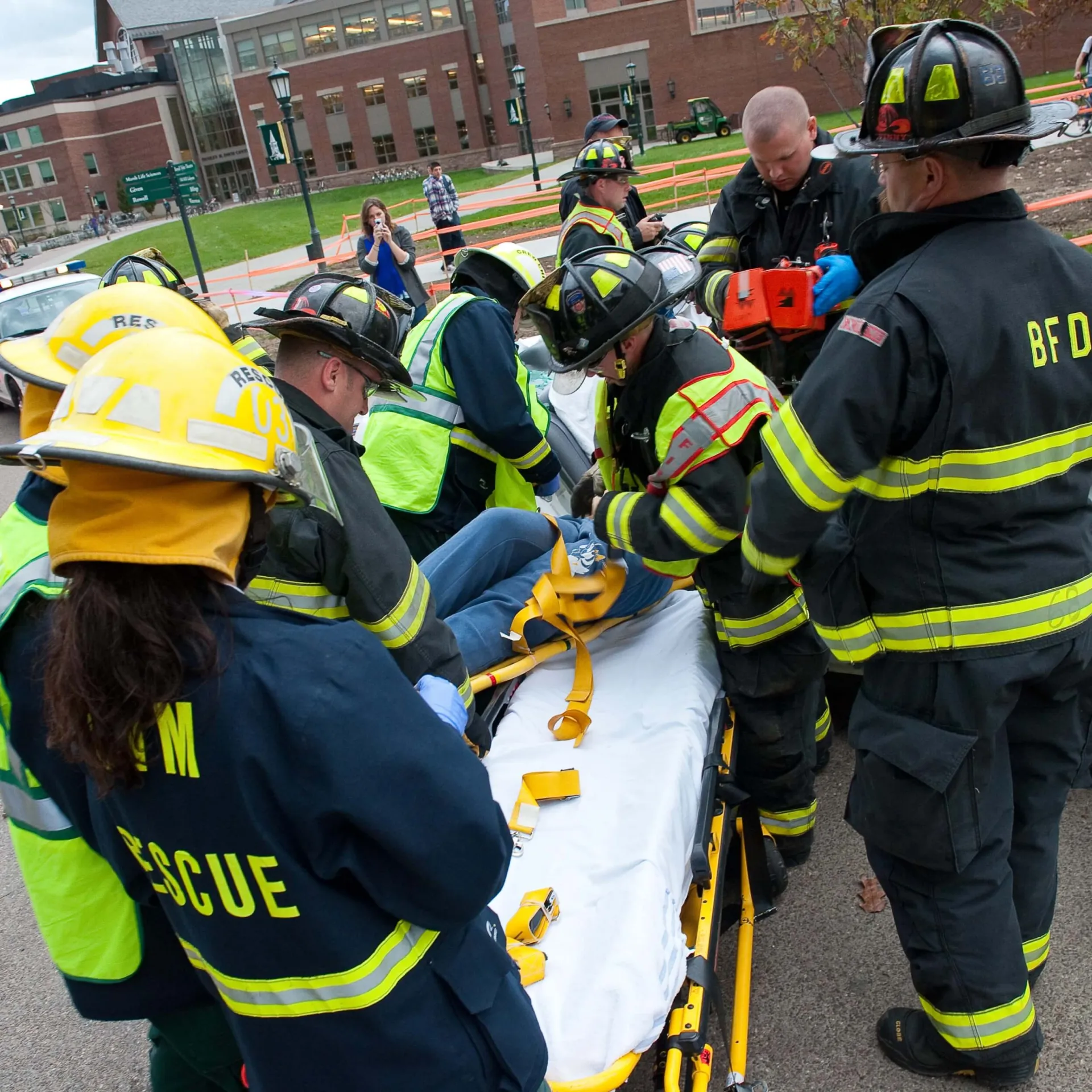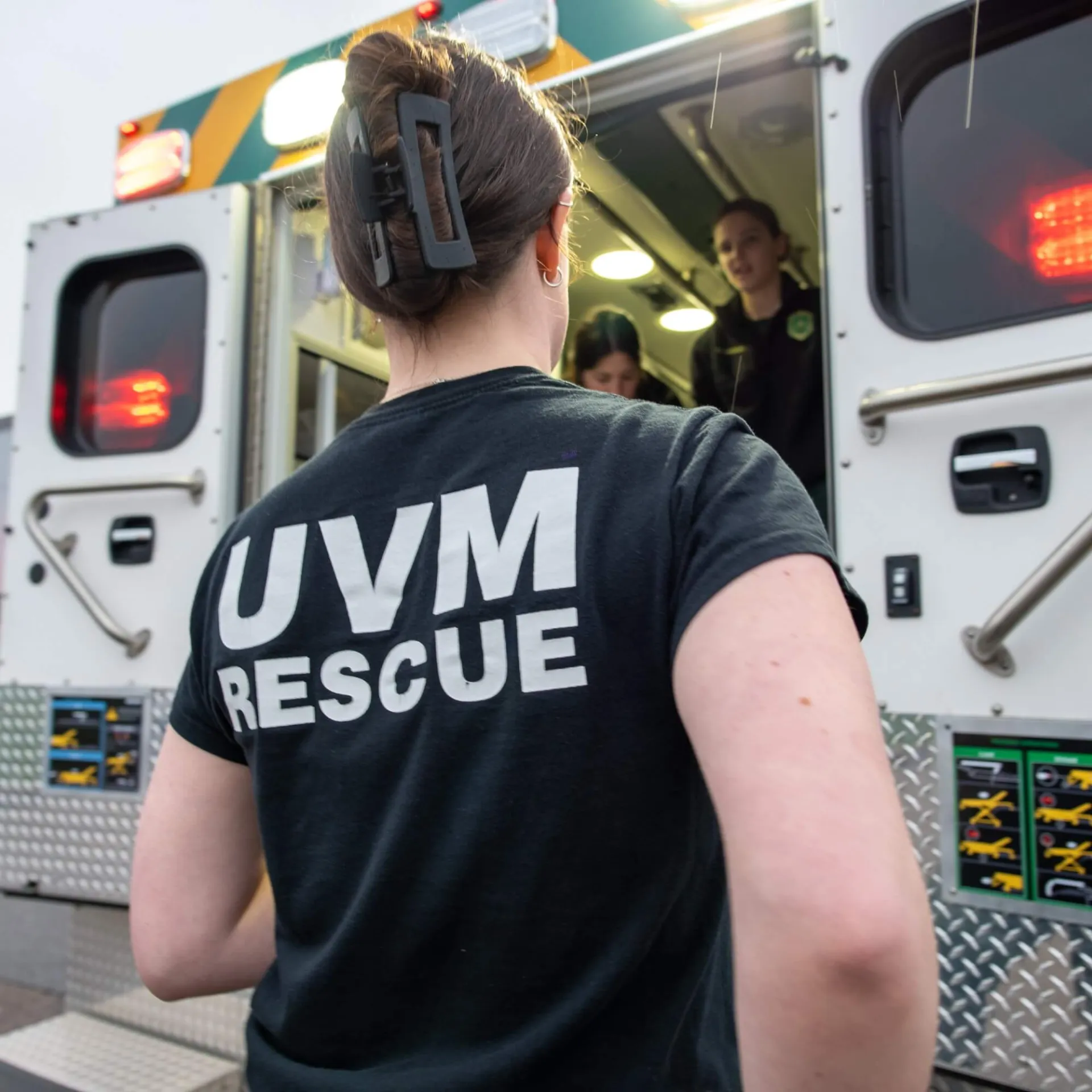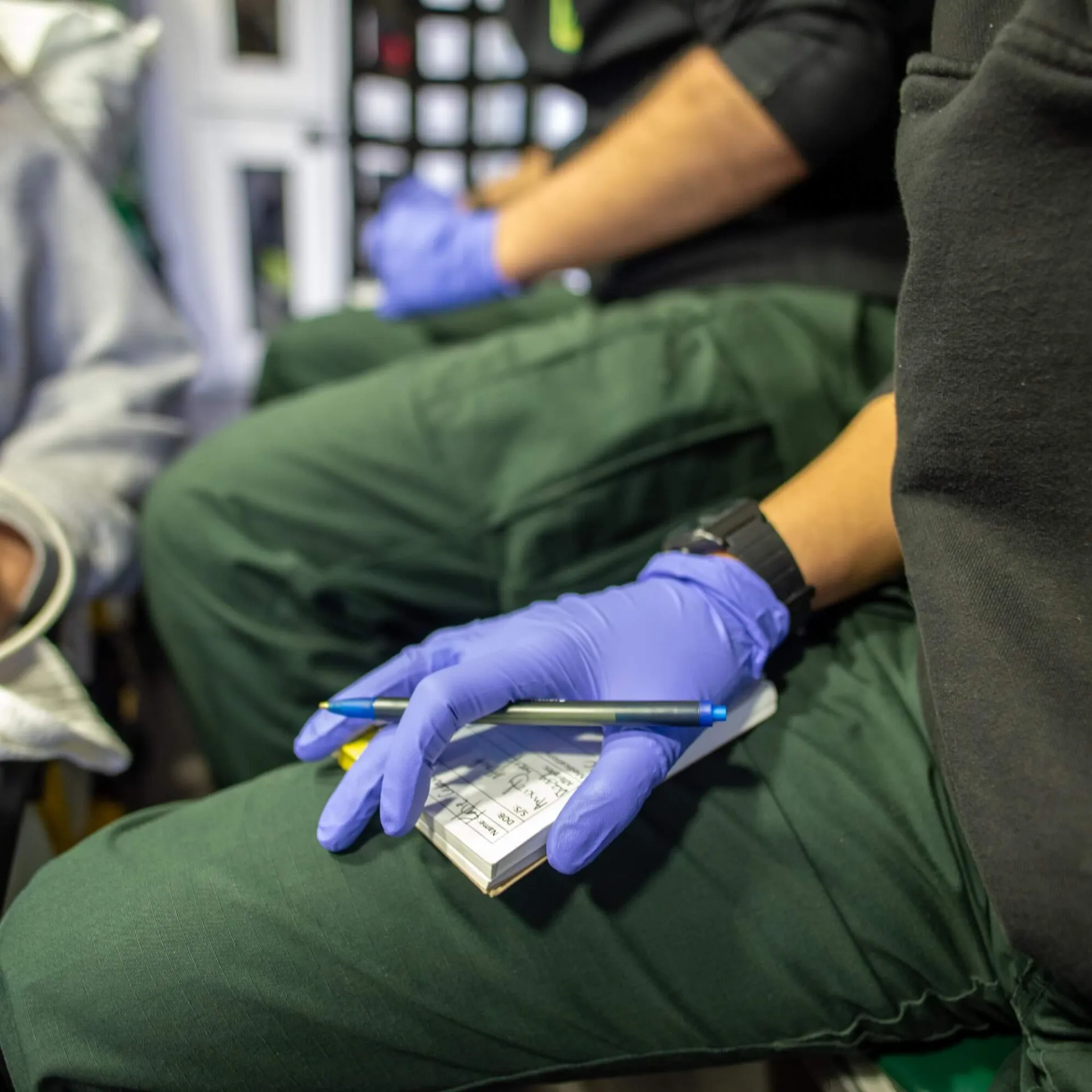Building Lifesaving Skills for Real-World Emergencies
Students will learn to assess and manage patients across the lifespan, respond to medical and trauma emergencies, and operate within the EMS system with professionalism, safety, and cultural sensitivity. The 110-hour course is evenly divided between lectures and practical skills labs, and is approved by the Vermont Department of Health Office of EMS and Injury Prevention. Through scenario-based learning and real-world applications, students gain the competencies needed to deliver effective emergency care and contribute meaningfully to public health and safety.
Prerequisites
Course Prerequisites
To enroll in the Emergency Medical Technician (EMT) course, applicants must meet the following criteria:
- Education: High school diploma, GED, or status as an academically talented high school senior
- Certification: Current Basic Life Support (BLS) certification equivalent to Healthcare Provider CPR or Professional Rescuer CPR. BLS training is available through Catamount Emergency Care.
First-Year Nursing Students
Interested in taking the EMT course? Please contact Tyler Molleur at tyler.molleur@med.uvm.edu for guidance.
Community Member Access
The EMT course is open to non-UVM students as a non-credit offering, providing the same high-quality training without academic credit.
To learn more or to register, please reach out to Chris Lamonda at christopher.lamonda@med.uvm.edu.
Course Objectives
By the end of the EMT course, students will be prepared to deliver safe, effective emergency care with confidence. The curriculum builds a strong foundation in clinical knowledge, hands-on skills, and professional behaviors—emphasizing critical thinking, teamwork, and compassionate care in real-world medical situations.
Students will learn to:
- Apply knowledge of the EMS system, safety/well-being of the EMT, and medical/legal and ethical issues to the provision of emergency care.
- Apply knowledge of the anatomy and function of all human systems to the practice of EMS.
- Use anatomical and medical terms and abbreviations in written and oral communication with colleagues and other health care professionals.
- Apply knowledge of the pathophysiology of respiration and perfusion to patient assessment and management.
- Apply knowledge of life span development to patient assessment and management.
- Apply knowledge of the principles of public health epidemiology, including public health emergencies, public health monitoring, health promotion, and illness and injury prevention.
- Apply knowledge of the medications the EMT may administer to a patient during an emergency and chronic or maintenance medications the patient may be taking.
- Apply knowledge of anatomy and physiology to patient assessment and management in order to assure a patent airway, adequate mechanical ventilation, and respiration for patients of all ages.
- Apply scene information and patient assessment findings (scene size-up, primary and secondary assessment, patient history, and reassessment) to guide emergency management.
- Apply knowledge to provide basic emergency care and transportation based on assessment findings for an acutely ill patient (medical).
- Apply knowledge of the causes, pathophysiology, and management of shock, respiratory failure or arrest, cardiac failure or arrest, termination of resuscitative efforts, and post-resuscitation management.
- Apply knowledge to provide basic emergency care and transportation based on assessment findings for an acutely injured patient (trauma).
- Apply knowledge of growth, development, and aging and assessment findings to provide basic emergency care and transportation for a patient with special needs.
- Demonstrate knowledge of operational roles and responsibilities to ensure patient, public, and personnel safety.
- Perform a basic history and physical examination to identify acute complaints and monitor changes.
- Formulate a field diagnosis based upon an actual and/or potential illness or injury.
- Communicate effectively in a non-discriminatory manner that addresses inherent or unconscious bias, is culturally aware and sensitive, and intended to improve patient outcomes.
- Safely and effectively perform all psychomotor skills within the National EMS Scope of Practice Model and state Scope of Practice at this level.
- Demonstrate professional affective domain behaviors including but not limited to: integrity, empathy/compassion, self-motivation, appearance/personal hygiene, self-confidence, communications, time management, teamwork/diplomacy, respect, patient advocacy, careful delivery of service, and lifelong learning.
- Initiate interventions based on assessment findings intended to provide symptom relief (within the provider’s scope of practice) while providing access to definitive care.
- Evaluate the effectiveness of interventions and modify the treatment plan accordingly.
- Report and document assessment findings, interventions performed, and clinical decision making.
- Function as a team member while gaining the experience necessary to serve as the team leader.
- Ensure the safety of the rescuer, other public safety personnel, civilians, and the patient.
Hybrid Course Option
The Hybrid EMT course through UVM’s Initiative for Rural Emergency Medical Services (IREMS) offers a flexible, blended learning experience for students pursuing EMT certification. Combining weekly online instruction with in-person skill labs, this format is ideal for those balancing work, school, or living in rural areas.
Program Format
The program format includes live online sessions held once per week, each lasting three hours and centered on core lecture content and interactive discussion. Weekly assessments consist of quizzes or exams along with one additional assignment designed to reinforce learning. In addition, students participate in in-person training across seven Friday evening or weekend sessions throughout the semester, engaging in hands-on skill practice through mock scenarios, case studies, and critical thinking exercises; competency evaluation occurs during HLTH 2531 skill labs.
Certification
Upon successful completion of the EMT course, students are eligible to sit for the National Registry of Emergency Medical Technicians (NREMT) certification exam. After earning national certification, students may pursue state licensure based on individual state requirements. For specific eligibility details, contact your state’s EMS office.
Frequently Asked Questions
Who is eligible to register for the Emergency Medical Technician course?
Individuals with a high school diploma, GED, or academically talented high school seniors are eligible to register. All applicants must be certified in Basic Cardiac Life Support (CPR) before the course begins. Priority registration is given to individuals affiliated with Vermont-licensed emergency medical service (EMS) organizations.
Why is priority given to individuals affiliated with EMS organizations?
Training resources are limited. Priority is given to those who will serve as emergency medical technicians in Vermont to ensure the state’s EMS needs are met.
How do I get affiliated?
Contact your local EMS service. If you’re unsure who that is, reach out to the Vermont EMS Office at 802-863-7310 or visit healthvermont.gov.
Do I need to be trained and certified to join an EMS service?
Most EMS services accept individuals with no prior training or experience. They will assist you in registering for appropriate training programs. Many services cover training costs or offer reimbursement upon completion.
I’m in a pre-med program. Will EMT certification help my medical school application?
Yes. Medical school admissions committees often value EMT experience for its clinical exposure and community service aspects. In addition to certification, they look for applicants who have actively used their training in real-world settings.
I live in Vermont, outside of Chittenden County. Can I affiliate with an EMS service elsewhere in the state?
Yes. You can affiliate with any EMS service licensed in Vermont, regardless of your county of residence.
I live in another state. Can I become certified in Vermont and be recognized elsewhere?
Yes. Vermont uses the National Registry of Emergency Medical Technicians for certification exams. Upon completing the certification process in Vermont, you will receive National Registry certification, which is recognized by most states. Contact your home state’s EMS office for specific details.


